A flood of security guidelines but what about compliance?
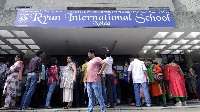 A 6 year old child had to lose his life for the pandora’s box to be flung open. The country’s schools are suddenly in the cross hairs for all the wrong reasons. Safety and security–a crucial facet of a child’s education is now being exposed as one of the most ignored concepts in schools that boast of state of the art facilities and bill the parents phenomenal sums in fees. As more and more probes emerge, what is exposed is something to worry about. And schools across the country are now desperately trying to fix their operations lest they too come under the scanner.
A 6 year old child had to lose his life for the pandora’s box to be flung open. The country’s schools are suddenly in the cross hairs for all the wrong reasons. Safety and security–a crucial facet of a child’s education is now being exposed as one of the most ignored concepts in schools that boast of state of the art facilities and bill the parents phenomenal sums in fees. As more and more probes emerge, what is exposed is something to worry about. And schools across the country are now desperately trying to fix their operations lest they too come under the scanner.
What multiple scans have exposed is alarming. Not just inside the school premise but even in school transport that ferry thousands of children from homes to school and vice versa. Conductors without licences, lackadaisical background checks and ill-equipped buses — a look at transport services of over two dozen schools in Delhi and Gurgaon has thrown up some worrying facts.
SECURITY TODAY spoke to school authorities, contractors, parents and bus staff, and discovered flagrant violations of several rules and regulations put in place by various authorities.
There have been several knee jerk reactions from authorities as the heat grows. The Central Board of Secondary Education (CBSE) issued a notice to all affiliated schools 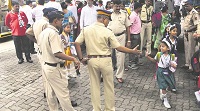 listing guidelines to ensure a child’s safety on school premises. A day later, Lieutenant-Governor Anil Baijal directed the Delhi government to make security measures mandatory and linked the rules to schools being recognised. He also asked the Delhi Police to waive verification charges so that schools are incentivised to do background checks on their staff.
listing guidelines to ensure a child’s safety on school premises. A day later, Lieutenant-Governor Anil Baijal directed the Delhi government to make security measures mandatory and linked the rules to schools being recognised. He also asked the Delhi Police to waive verification charges so that schools are incentivised to do background checks on their staff.
The CBSE guidelines have asked schools to restrict access to their buildings and monitor any visitors. Reactions have been steady from across the country. Schools in Ludhiana, such as the BCM Arya Model Senior Secondary School and the local branch of Ryan International School, have started issuing ID cards to parents.
“We do not let our students leave unless it is with a person holding a valid parent ID card, or with people who have been authorised by the parents,” said SK Bhattacharya, secretary of Delhi’s Bal Bharati Public School and president of the School Action Committee. One of the directives and suggestions that have come from most law enforcement agencies is verification of staff to check for criminal records. Police sources said the suspect in the murder of the student at the Gurgaon branch of Ryan International School was hired without verification. Investigations suggested the suspect, Ashok Kumar, was fired from his previous job at a private school in his village Ghamroj because of suspicious behaviour.
The CBSE guidelines include a direction to ensure that vulnerable and isolated parts of a school are monitored constantly by closed-circuit television (CCTV) cameras, but officials believe it is easier said than done. “Just one or even ten cameras are not sufficient. At Bal Bharti Public School in Pitampura, we have 300 such cameras in every corner of the school. But how many schools will actually be able to afford it?” asked Bhattacharya.
CCTV by itself may not be sufficient since instances of abuse, such as the Ryan murder, take place in areas that are in surveillance blind spots, such as toilets. Parents in many schools have sought attendants in toilets for safety of children.
instances of abuse, such as the Ryan murder, take place in areas that are in surveillance blind spots, such as toilets. Parents in many schools have sought attendants in toilets for safety of children.
Placing the onus on schools for safety of students on their premises, the CBSE guidelines included a psychometric test for teaching and non-teaching staff. The board has asked schools to complete the evaluation process within two months and implement the other guidelines, failing which they would face derecognition.
The board’s directive comes amid increased concerns about safety of students in school premises following the killing of a seven-year-old student in a Gurgaon school and the rape of a five-year-old girl by a school peon in Delhi.
 “Such verification and evaluation for non-teaching staff such as bus drivers, conductors, peons, and other support staff may be done very carefully and in a detailed manner. This may be complied with and reported online on CBSE website within two months of receipt of this circular,” the CBSE directive states.
“Such verification and evaluation for non-teaching staff such as bus drivers, conductors, peons, and other support staff may be done very carefully and in a detailed manner. This may be complied with and reported online on CBSE website within two months of receipt of this circular,” the CBSE directive states.
Safety audits, installation of CCTV cameras, police verification, psychometric evaluation, constitution of parent-teacher-students committees to address safety needs of the students and taking regular feedback from parents are among the measures prescribed by the board.
“The onus for safety and security of children in school campus shall solely lie upon the school authorities. It is a fundamental right of a child to engage and study in an environment where he/she feels safe and is free from any form of physical or emotional abuse or harassment,” the CBSE directive states.
It also says that access to the school building by outsiders should be controlled and visitors monitored. “Training should be provided to the school staff to address their responsibilities to protect children from any form of abuse,” the directive says. “Any violation/lapses with regard to safety and wellbeing of children in school campus would invite appropriate action including the disaffiliation of the school as per the provisions under affiliation by-laws of the board,” it adds.
The schools have also been asked to constitute separate committees for redressal of grievances of the public, staff, parents and students, an Internal Complaints committee on sexual harassment, and committees under POCSO (Protection of Children from Sexual Offence) Act, 2012.
“Details of the these committees along with contact details shall be displayed prominently on school notice board and conspicuously on the school website for information of all stakeholders,” the communication sent to schools says.
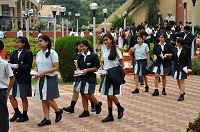 Ensuring employment of support staff only from authorised agencies and maintenance of proper records, is another one of the guidelines. Ashok Agarwal, a lawyer and the president of the All-India Parents Association, said the fundamental problem was that since private schools can be profit-driven, they can forget about involving the most important stakeholders – the parents. “Parents should be involved, not kept outside the school boundaries. There should be a shift of power from the school management. The Centre should enact a law giving 50% representation to parents in committees that run unaided schools,” he said.
Ensuring employment of support staff only from authorised agencies and maintenance of proper records, is another one of the guidelines. Ashok Agarwal, a lawyer and the president of the All-India Parents Association, said the fundamental problem was that since private schools can be profit-driven, they can forget about involving the most important stakeholders – the parents. “Parents should be involved, not kept outside the school boundaries. There should be a shift of power from the school management. The Centre should enact a law giving 50% representation to parents in committees that run unaided schools,” he said.
He added that currently parents account for just one member of the 22-member committees. “Guidelines don’t ensure safety. There should be a proper law enacted by Parliament, including the minorities’ schools. A law empowers parents. What we are being offered is cosmetic,” he said.
Priyank Kanoongo, member-RTE and Education at National Commission for Protection of Child Rights (NCPCR), said that such incidents were not endemic to any particular region but indicated a “national crisis”. “A student was found murdered in Ranchi. A student drowned in a swimming pool at Bhopal. Such incidents are happening everywhere, in urban and rural schools. But it happens more so in private schools because there is a lack of vigilance,” said Kanoongo. A major reason for this, according to him, is a lack of parents’ intervention in private schools, affecting accountability.
 “Under the RTE, the formation of a School Management Committee (SMC) is mandated for government schools, but private schools are exempted. This means that around 73% of schools in India have SMCs, while others don’t. And most schools that do not have SMCs are private schools,” he said. But in the wake of recent incidents, many schools are involving parents in committees set up to improve security.
“Under the RTE, the formation of a School Management Committee (SMC) is mandated for government schools, but private schools are exempted. This means that around 73% of schools in India have SMCs, while others don’t. And most schools that do not have SMCs are private schools,” he said. But in the wake of recent incidents, many schools are involving parents in committees set up to improve security.
“We have time and again taken suggestions from parents on security but of late, parents are still anxious so we have decided to include some parents in our security committee. Many have agreed to even visit the school on a regular basis to ensure security is in place and we have agreed to come to a conclusion on the same,” said Rohan Bhat, principal of Children’s Academy in Malad, Mumbai.
 Educationist and former principal of Laxman School Dr. Usha Ram said: “Random inspections by the Delhi government are common, maybe twice or thrice in a year, but these are just to ensure good academics and infrastructure in a school, like whether CCTV cameras are installed correctly or not.” She added that schools should make sure that there are attendants at washrooms for students and separate washrooms for staff/ parents and students, which Laxman School had done.
Educationist and former principal of Laxman School Dr. Usha Ram said: “Random inspections by the Delhi government are common, maybe twice or thrice in a year, but these are just to ensure good academics and infrastructure in a school, like whether CCTV cameras are installed correctly or not.” She added that schools should make sure that there are attendants at washrooms for students and separate washrooms for staff/ parents and students, which Laxman School had done.
Ashok Pandey, the principal of Ahlcon International School, said that only bringing in more security measures would not be sufficient. “One activity is not sufficient. Security should take center stage and for that, we should renew our efforts to make students safe,” he said.
According to him, re-visiting facilities and regular supervision by authorities are required as just installing cameras or other security features is not enough
Some schools have brought parents into the campus to detail the measures in place, while others have held meetings with teachers about monitoring changes in a child’s behaviour. At the Ryan International School’s Chennai branch in Sriperumbudur, principal Sumitha Christopher met with parents following the Gurgaon incident. “Our head office asked us to reinforce security measures,” says Christopher. “Parents are aware of our stringent security. Still, we called them in so they could see it for themselves,” adds Christopher, who also had the credentials of security personnel reverified.The school also conducted a session with children on ‘good and bad touch’ and what to do in uncomfortable situations. The managements of other international schools are talking to teachers about safety of children. K R Malathi, education consultant for the SRM Public School, spoke to teachers on the importance of monitoring children’s behaviour.”For instance, if they refuse to attend a particular class or take a particular school bus, one needs to check why,” says Malathi.
HLC International seems to have a completely different approach to ensuring children’s safety. “Knee-jerk reactions are not the answer. More than increasing the number of ways to police the movement of people in and around school, it is better to build an environment of trust and transparency. For instance, every year, we have team building activities with the support staff and bus drivers. It acknowledges their vitality in the school’s operations,” says Naveen Mahesh, the school’s director.
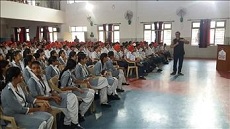 A monthly security audit of all schools in Uttar Pradesh and police verification of their staff are among the measures that have now been announced to ensure the safety of students after the Gurugram tragedy. DGP Sulkhan Singh issued a directive to all the district police chiefs which stated that “concerned circle officers and beat personnel should do monthly security audit of schools in their area and prepare its report.”
A monthly security audit of all schools in Uttar Pradesh and police verification of their staff are among the measures that have now been announced to ensure the safety of students after the Gurugram tragedy. DGP Sulkhan Singh issued a directive to all the district police chiefs which stated that “concerned circle officers and beat personnel should do monthly security audit of schools in their area and prepare its report.”
Singh also said police should coordinate with schools and district magistrates and ensure security there. The DGP’s directive spelt out measures like police verification of school staff, van drivers/conductors, checking unauthorised entry in schools and deployment of security at entry and exit gates. Other measures include maintenance of a visitors register, installation of CCTVs, ban on firearms and sharp edged weapons in the school premises, security at washrooms and separate washrooms for students, teachers and employees. The DGP also said that identity cards should be issued to the entire staff; if any worker is called in, they should also be given temporary ID cards.
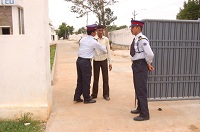 The education department has already issued a circular for police verification of staff in Lucknow schools, bus drivers, and conductors. The department has also banned use of smartphones by drivers and conductors in the capital’s schools. Schools have been asked to ensure that sharp items do not make their way into school transport, District Inspector of Schools, Mukesh Kumar said. The DIOS said that the use of smartphones by drivers and conductors of school vehicles has been banned as many times they are used to show objectionable content to children.
The education department has already issued a circular for police verification of staff in Lucknow schools, bus drivers, and conductors. The department has also banned use of smartphones by drivers and conductors in the capital’s schools. Schools have been asked to ensure that sharp items do not make their way into school transport, District Inspector of Schools, Mukesh Kumar said. The DIOS said that the use of smartphones by drivers and conductors of school vehicles has been banned as many times they are used to show objectionable content to children.
The ministry of Human Resources Development had earlier sent across a standard set of guidelines to school and demanded compliance. The HRD ministry’s guidelines insist that schools should have concrete boundary walls topped with concertina barbed wire fence with 3-4 gates which should be guarded by at least 3 guards round the clock. The guideline also says that the boundary wall should be well illuminated and constantly monitored.
The guidelines also specify that CCTV cameras with video analytics capabilities should be in place on the boundary walls at specific places in the school and there must be integration with alarm systems. The HRD ministry guidelines delves at length into the SOPs following any incident and the response of the school staff. It also specifies the need of drills and dry runs to ensure everyone involved knows his role in times of an emergency. The guidelines are elaborate and specific, it is another matter that there is not even a single school in the country who would have the willingness to comply with even half of the specified SOPs.
 A similar set of guidelines focused on school and student safety against disasters issued by the National Disaster Management Authority is also available to develop the school safety policy. The elaborate document spells out the various threats to safety of schools and its occupants and what needs to be done to ensure that least damage is done during disasters. The detailed study is more specific on safety but once again the compliance with what the NDMA thinks would make a safe school, are quite a remote possibility..
A similar set of guidelines focused on school and student safety against disasters issued by the National Disaster Management Authority is also available to develop the school safety policy. The elaborate document spells out the various threats to safety of schools and its occupants and what needs to be done to ensure that least damage is done during disasters. The detailed study is more specific on safety but once again the compliance with what the NDMA thinks would make a safe school, are quite a remote possibility..
School transport
To ferry children to and from schools, schools either purchase a fleet of buses, take the vehicles on contract, or tie up with the local transport authority.. Some rely on the contractor to provide the bus staff, while others either do the hiring themselves or rope in a placement agency. One of the most glaring issues is the absence of a conductor on most buses, despite the 1997 Supreme Court guidelines stating that “the driver should be accompanied by a conductor holding effective conductor’s licence”.
A conductor’s licence is issued by the transport department, and is important because one has to have studied till Class X to be eligible. This also helps keep a database of all conductors who work at schools, an official explained. But many schools and agencies that supply buses are oblivious of this rule. “Requirement for a conductor was not conveyed to us, so we do not have them. However, for the driver, we do everything — a thorough check of his past record as well as police verification,” said Vijay from Anand Travels, which supplies buses to schools in south Delhi.
Private buses are usually procured through a tendering process, and the bus operator who wins the contract supplies buses to schools. In some cases, these operators further outsource work to private travel agencies, which have a fleet of buses. Like other companies, Anand Travels gets details of buses required from a subcontractor, who has secured a contract from the school. Each bus staffer is supposed to submit an identity proof, which is also submitted to the police for a background check.
A principal of a south Delhi school said that while they don’t have conductors, “they have a guard and a teacher who accompany the children”. Sanjeev Khanna, a trustee of Maxfort School, which has a chain of schools in west Delhi, was also unaware of the need for authorised conductors. “There is no awareness about what a conductor means in a school bus since no ticketing is happening. But now we are trying to get the documentation done,” he said.
Since the September 8 murder at Ryan school, the enforcement wing of the Delhi government has impounded over 200 school buses as their conductors did not have licences. Vijay of Anand Travels, however, sheds light on the reality: “The people we employ as drivers and conductors are mostly illiterate. Why will an educated man want to do this job? We look at their experience and make sure they don’t drink. What more can we do?”
Jyoti Arora, principal of Mount Abu Public School, said the school has around 10 buses and hires drivers and conductors through a placement agency. “They take care of the entire recruitment and verification process,” Arora said.
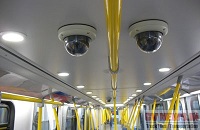 In Gurgaon, where the Class II boy was murdered on September 8, transport authority officials said the situation is more alarming. In a campaign conducted last year by the Regional Transport Authority (RTA), several prominent schools were found to be erring when it came to arrangements for safety and security of students during the commute. “The most common oversight found was lapses in verification of staff — drivers as well as conductors. In several instances, the verification process was found to be missing altogether, especially for privately hired buses,” a source said.
In Gurgaon, where the Class II boy was murdered on September 8, transport authority officials said the situation is more alarming. In a campaign conducted last year by the Regional Transport Authority (RTA), several prominent schools were found to be erring when it came to arrangements for safety and security of students during the commute. “The most common oversight found was lapses in verification of staff — drivers as well as conductors. In several instances, the verification process was found to be missing altogether, especially for privately hired buses,” a source said.
The ‘Guidelines for Safety of Children in Schools’, issued by Gurgaon Police, state: “It is the responsibility of the school to ensure that all transport staff, even if provided by contractors, have been verified. The school must maintain a copy of police verification for such staff, with details of contacts of their hometown, as well as two referees from hometown and two referees from Gurgaon.”
Many schools, however, fail to do this, said a source, adding that institutions also frequently violate other conditions listed in the guidelines, such as the need for “working speed governors”. “When they use private companies to provide transportation to students, this happens even more,” an RTA source said. “We try to keep an eye on things and conduct checks on a regular basis, but our manpower is limited.”
While these are issues at the policy level, violation of guidelines are most evident in terms of facilities buses are supposed to have. All school buses should have a board of size 400mm x 400mm secured on the front and rear, to display the fact that the vehicle is used to ferry children. The colour of the board should be golden yellow on which an iconographic representation of two school children — one girl and one boy — is supposed to be painted in black.
Most school buses don’t have this. In the case of several private buses, the name of the school are written on a white paper with black ink, hardly legible from afar. This amounts to violation of the Supreme Court guidelines framed in 1997, after a school bus plunged into the Yamuna at Wazirabad, killing 28 students.
Buses should also be equipped with a first-aid box, fire extinguisher, CCTV, GPS and amber flashing lights on the top four corners, to be activated when children are boarding or deboarding.
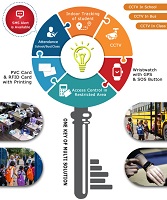 Today technology is available to address these security and safety challenges that school managements face. Integrated Hardware and Software solutions that manage automated card based and/or biometric access control right from logging in a student when they board a bus in the morning and notifying the parents right there and then via an email and SMS in case their ward has failed to board the bus in the morning. The technology then tracks the vehicle and its progress at various boarding locations on the assigned route. In case the speed of the vehicle is high or it digresses from the assigned route, an alert is generated to warn the school security control room. It is possible to manage all these functions from a single unified database
Today technology is available to address these security and safety challenges that school managements face. Integrated Hardware and Software solutions that manage automated card based and/or biometric access control right from logging in a student when they board a bus in the morning and notifying the parents right there and then via an email and SMS in case their ward has failed to board the bus in the morning. The technology then tracks the vehicle and its progress at various boarding locations on the assigned route. In case the speed of the vehicle is high or it digresses from the assigned route, an alert is generated to warn the school security control room. It is possible to manage all these functions from a single unified database
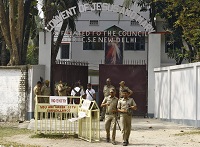 While the new guidelines that have been announced by various agencies are good, the real problem lies in implementation and monitoring of these schools. While CBSE has brought out rules for security, it is not responsible to monitor their implementation. It is perhaps the onus of the State to do so, but even in the government there’s no single-point authority that looks into the security aspect in schools in a holistic manner. While the fire department looks at fire clearances, the police will look at security and the transport department at schools buses. This multiplicity of authorities and lack of regular review of security arrangements embolden unscrupulous schools management to cut corners, which puts children at risk.
While the new guidelines that have been announced by various agencies are good, the real problem lies in implementation and monitoring of these schools. While CBSE has brought out rules for security, it is not responsible to monitor their implementation. It is perhaps the onus of the State to do so, but even in the government there’s no single-point authority that looks into the security aspect in schools in a holistic manner. While the fire department looks at fire clearances, the police will look at security and the transport department at schools buses. This multiplicity of authorities and lack of regular review of security arrangements embolden unscrupulous schools management to cut corners, which puts children at risk.
Sadly the furore around all this will eventually die out. Just as the furore around a child drowning in Ryan’s Vasant Kunj branch did. After several days of media glare, the school was back to normal with no significant changes having been made. It came under the spotlight again after the Gurgaon incident. But that ended within a week. Schools across the country have been warned, threatened, cautioned by multiple authorities–both from law and order machinery and state administration. Even parents are now insisting that schools should have professional security systems. A number of schools are looking for security system integrators to guide them in implementing the suggested solutions, not knowing themselves, what exactly they should have and why. They also don’t want to spend too much money doing this.
Clearly the schools are unaware of what are the potential risks that they face and what security and safety processes and technology they should have. Multiple guidelines coming now and several that existed earlier and the advice and pressure from parents is confusing them. Either due to ignorance, the cost factor or simply an attitude that the school management knows what is best, they have largely failed to approach qualified security consultants, to have their risks analysed and solutions suggested, keeping in view all the compliances.
Clearly even now the implementation of guidelines issued may not be forthcoming. And possibly schools which are unwilling to invest in security realise that as the furore ends, so will the demand for implementation of guidelines. Until it lasts the schools will show some eagerness for security even if just to tick the “required” box.
SIX STEPS IN DEVELOPING A SCHOOL SECURITY PLAN
There are many things to consider when developing a school-wide school safety and security plan. The planning process takes time and is ongoing. The four phases of emergency management; mitigation and prevention, preparedness, response, and recovery, help to establish a foundation for planning. The phases are all interconnected impacting the outcomes of each phase. Additionally, the following six (6) basic steps may be of assistance to the school when formulating its Safety & Security plan:
1. Assemble a school wide planning team:
The team should at least include administrators, parents, teachers, and maintenance, transportation, food service, and nursing personnel from within the school. Outside agencies that should be involved include law enforcement, fire, hospital, and emergency management personnel.
2. Conduct hazard analysis of site and surrounding area:
Identify what hazards are likely to affect the area in and around your school. Determine the severity of impact of each identified hazard. Local emergency management personnel can assist with this assessment.
3. Eliminate or mitigate hazards:
Determine if you can eliminate or mitigate any of the hazards you identify in step 2.
4. Develop procedures to respond to hazards:
Develop written procedures on how to respond to the hazards identified in step 2 that cannot be eliminated.
5. Train students and staff:
Students and staff must be trained on how to use the plan and what their responsibilities will be in a given response.
6. Conduct drills and table-top exercises:
Drills and table-top exercises should be conducted to test the plan. All participants should be debriefed at the conclusion of each drill. The feedback provided by participants is used to identify strengths and weaknesses in the plan. The plan is then modified to strengthen any weaknesses.






